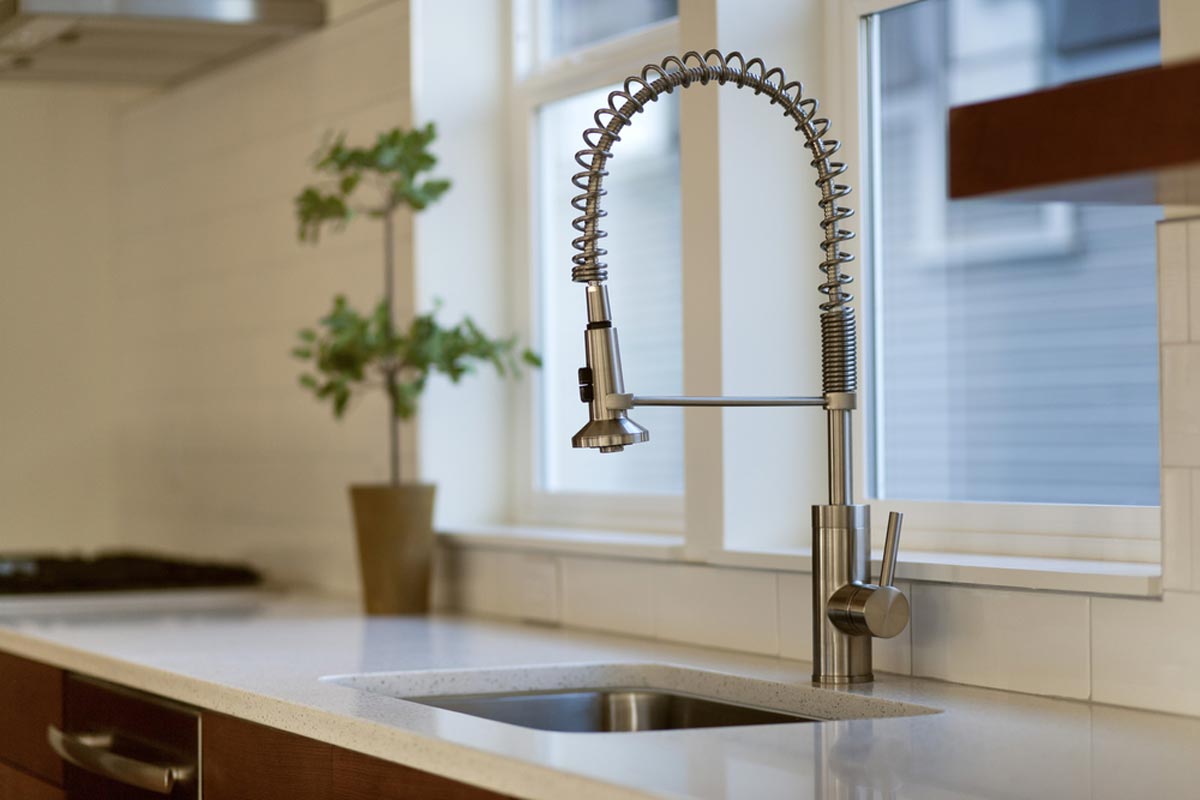Table of Contents
Introduction
Imagine this scenario. You find yourself in the kitchen effortlessly cleaning dishes using a pull-down kitchen faucet. A set-up faucet doesn’t just make tasks easier. Also elevates the overall look of your kitchen.
Within this guide we will take you through each step of setting up a pulldown kitchen faucet giving you the knowledge and assurance to enhance your kitchen space confidently.
Understanding Your Faucet
Before we get into setting it up let’s take a moment to understand the parts that make up a pull-down kitchen faucet.
These faucets typically consist of:
- Spout: The main body of the faucet from which water flows.
- Handle: Used to control the temperature and flow of water.
- Removable Sprayer: A nozzle that can be detached and extended from the spout, for increased maneuverability.
- Sprayer Tube: Links the sprayer to the plumbing of the faucet.
- Docking Mechanism: Ensures that the sprayer stays securely positioned when it is not being used.
When selecting a pull down faucet it’s important to think about aspects, like the design, the finish and functionalities such, as spray options and hands free operation.
Pre-Installation Preparation
Tools and Materials
Make sure you have these tools and materials ready before you begin the installation process:
- Adjustable wrench
- Basin wrench
- Plumber’s tape
- Bucket
- Towels or rags
- Safety goggles
- New pull-down kitchen faucet kit
Safety Precautions
Prioritize safety above all else when dealing with plumbing tasks.
Here are a few safety measures to keep in mind:
Don’t forget to turn off the water supply to the kitchen sink. Allow the faucet to run to flush out any remaining water in the pipes. Remember to wear safety goggles to protect your eyes from any debris.
Shutting Off Water Supply
Find the valves beneath the sink. Twist them to the right to stop the water flow. After that open the tap to release any leftover pressure in the pipes.
Removing the Old Faucet
Getting rid of the faucet marks the stage in putting in your brand new pull-down and removing the old kitchen faucet.
Follow these steps:
- Start by turning off the water supply. Then use a wrench to disconnect the hot and cold water lines from the faucet.
- Next loosen the nuts or screws that hold the faucet in place on the sink or countertop using a basin wrench or an adjustable wrench.
- Carefully lift out the faucet from the sink being mindful not to cause any damage, to the surrounding area.
- After removing the faucet clean up the sink area by wiping any debris or sealant residue.
Installing the New Faucet
Now that you have taken out the faucet it’s time to put in the one.
Follow these steps:
- Placing the Faucet: Install the pull down faucet in the designated holes, on the sink or countertop.
- Linking Water Supply Lines: Connect the hot and cold water supply lines to their valves making sure to create a seal using plumbers tape.
- Securing the Faucet in Place: Use a basin wrench or an adjustable wrench to firmly tighten the nuts or screws that hold the faucet in place on the sink or countertop.
- Inspecting for Leaks: Turn on the water supply. Carefully examine for any signs of leakage, around the connections.Tighten any fittings as needed to eliminate leaks.
Attaching the Pull-Down Sprayer
Installing the Sprayer Hose
The retractable sprayer enhances the functionality of your faucet.
Here’s how to attach it:
- Connect the Hose to the Faucet: Start by attaching one end of the sprayer hose to the sprayer nipple on the faucet.
- Ensure a Secure Connection: Use either the clip or nut that came with it to secure the hose onto the faucet.
- Attach the End: Connect the end of the hose, to the sprayer head making sure it is securely fastened in place.
Testing Functionality
Once you’ve connected the spray hose give the pull down feature a try to check that it moves smoothly. The spray should come out. Go in without any hitches or tangles.
Post-Installation Checks and Adjustments
Checking for Leaks
After you’ve installed the faucet turn on the water to see if there are any leaks. Check the connections. Tighten any fittings to prevent leaks.
Adjusting Temperature and Water Pressure
Turn the faucet handle to adjust the water temperature and flow based on what you like. Many faucets come with options to set the temperature for both cold water.
Ensuring Smooth Operation
Make sure the faucet handle and pull down sprayer move easily without feeling stiff or difficult to use. If you face any problems check out the guidance provided by the manufacturer for troubleshooting advice.
Troubleshooting Common Issues
Sometimes after setting it up you might run into some typical problems, with your pull down kitchen faucet.
Here are a few troubleshooting tips:
Leaky Connections: Make sure to inspect for any fittings and tighten them up if necessary to prevent any leaks.
Low Water Pressure: Clean out the aerator to get rid of any debris that might be causing a restriction, in water flow.
Stiff Pull Down Sprayer: Apply some silicone grease to the sprayer hose to make it more flexible and easier to use.
Maintenance Tips for Longevity
To make your pull down kitchen faucet longer:
follow these maintenance tips:
- Routine Maintenance: Clean the faucet, by wiping it with a cloth to get rid of any dirt or grime.
- Use Gentle Cleansers: Opt for soap and water when cleaning to protect the faucets surface from any damage.
- Monitor for Drips: Regularly check the faucet for leaks. Address any issues promptly to avoid water damage.
Conclusion
Setting up a pull down kitchen faucet can be a DIY endeavor that improves both the practicality and appearance of your kitchen. Simply follow the instructions provided in this article to confidently handle the installation process and savor the benefits of an installed faucet.
Always keep safety first adhere, to the manufacturers guidance and don’t hesitate to reach out for assistance if necessary. Enjoy your installation experience!
Frequently Asked Questions
What tools should I have on hand to set up a pull down kitchen faucet?
You’ll need some tools, like a wrench plumbers tape and possibly a bucket to catch water. You might also require a tool known as a basin wrench to access spaces.
Is it necessary to shut off the water before putting in a faucet?
It’s crucial to turn off the water supply to your kitchen sink before you begin. This step helps prevent water spillage and ensures an installation process.
How can I tell if my faucet is leaking post installation?
Once you’ve installed the faucet, turn on the water. Inspect for any drips or leaks, near the connections. If you notice water in places consider tightening the connections or applying plumbers tape.
Can I install a pull-down faucet by myself, or do I need help?
Many people can install a pull-down faucet by themselves, especially if they’re comfortable with DIY projects. However, if you’re unsure or don’t feel confident, it’s always a good idea to ask for help from a friend or hire a professional plumber.
Please explore our site for more exciting content if you like this article.





